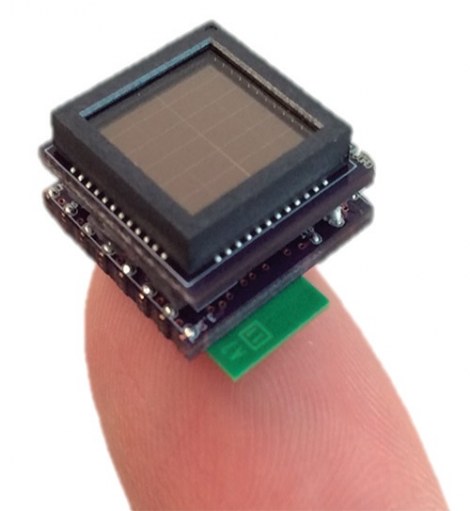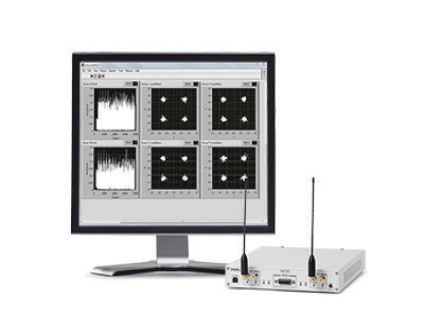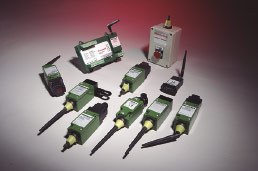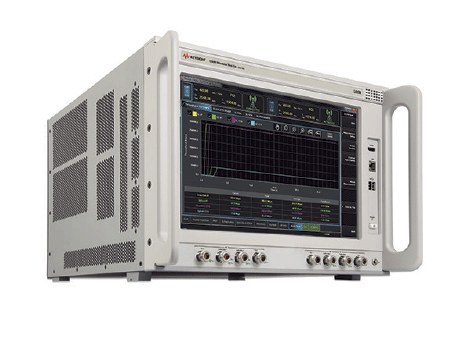One vision of the Internet of Things is the ability to measure and use things that have never been measured before. When monitoring aging infrastructure, such as bridges, tunnels, or power transmission lines, or providing real-time parking or traffic information, these applications require Wireless Sensor Networks (WSNs) to deliver performance similar to that of a wired network together with its practical installation. These WSNs need to be able to support a large number of wireless nodes, and in many cases cover long distances.
Keys for Widespread Use
For WSNs to be deployed on a large scale, they must be practical to install and they must function reliably for many years, often more than a decade. For this to be possible, WSNs must meet a series of fundamental requirements:
- Location of a sensor anywhere – It is necessary to place measurement points where it is optimal for sensing, but not necessarily optimal for communication. As a result, sensor nodes are often placed in locations that do not necessarily have convenient access to communications or power infrastructure, and are often in difficult RF environments (e.g., near ground, in tunnels, under cars or deep inside machinery).
- Low maintenance – The network must have a high degree of self-maintenance and any physical maintenance (such as battery replacement) must not involve the movement of a vehicle or the visit of a technician. For example, in smart parking applications, battery-powered sensors are only allowed to be installed on the road surface if they can be replaced at the same interval as regular road repairs, which is done every 5-7 days. years. In other applications, WSNs are installed to work for more than a decade.
- Communications reliability – They must be able to communicate reliably with the sensors even though they may be installed in a harsh RF environment.
- Scalability – A network should be suitable for a number of similar but unique installations covering a wide variety of network sizes (both in number of nodes and coverage), depth (i.e., the number of hops of the radio signal to a node). from a data exit point), level of data traffic, etc.
Construction of a predictable network on an unpredictable environment
It is difficult to achieve low consumption without striking a balance between various aspects
There are numerous techniques within wireless sensor networks that seek low-power operation. Some wireless networks, such as ZigBee, only achieve low power on sensing devices installed at the edge of the network, but need power lines for routing nodes. Other networks add a basic form of duty cycle, called “beaconing,” in which the entire network shuts down and goes into a low-power sleep mode for long periods of time, but network availability and capacity are sacrificed. entire network.
However, for the types of applications related to the Internet of Things, wireless sensor networks must be able to host much larger networks and communicate at regular data intervals. The challenge is therefore to provide low consumption without sacrificing reliability or availability of the network.
RF is unpredictable
Radio (RF) is an unpredictable communications medium. Unlike wired communications, in which the communications signal is shielded from the outside world by cabling, RF propagates in the open air and interacts with the surrounding environment. The potential exists for other sources of RF transmission to cause active interference. Much more common is the effect of multipath fading, where the RF message can be attenuated by its own signal reflected from surrounding surfaces and arrives out of phase.
Mobile phone users experience multipath fading on a daily basis when their handset has weak signal strength at a certain point, but can improve it by moving it a few centimeters.
Also, the effects of the various paths change over time, as reflective surfaces (such as people, cars, or doors) tend to move. The result is that any RF channel will experience significant variation in signal quality over time. However, since multipath fading affects each RF signal differently, using channel hopping for the various frequencies minimizes its negative effects. The challenge for WSNs is therefore the ability to use frequency hopping in large multi-hop networks.
Mesh networks with time-synchronized channel hopping
Reliable, low-power wireless sensor networks are a reality thanks to Time Synchronized Channel Hopping (TSCH) mesh networks first developed by Linear Technology's Dust Networks and proven valid some of the harshest environments.
TSCH is already a basic building block in industrial wireless standards such as WirelessHART (IEC62591) and is a building block for the development of emerging standards for IP-based wireless sensor networks.
In a TSCH network, each node has a common sense of time that is accurate to less than a few tens of microseconds throughout the network. Network communication is organized into time slots that allow for low-power packet exchange, paired channel hopping, and full path diversity.
Low consumption packet exchange
Using TSCH allows nodes to go to sleep mode with ultra-low power consumption between scheduled communications. A device is only active if it is sending a packet or waiting for a potential packet from a neighboring device. And what is even more important, each node knows when it is scheduled to wake up and is always available to receive information from its neighbors. Therefore, TSCH networks often achieve <1% duty cycles while maintaining full network availability. Furthermore, since the transaction of each packet is scheduled, packet collisions do not occur within a TSCH network. Networks can be dense and can be sized without generating RF self-interference to weaken it.
Paired Channel Skips
Time synchronization allows channel hopping on each transmitter-receiver pair for greater frequency diversity. In a TSCH network, each packet exchange channel is hopped in order to avoid the inevitable RF signal interference and fades. Multiple transmissions can also occur between different pairs of devices simultaneously and on different channels, thus increasing network bandwidth.
Total diversity of routes and frequencies
Each device has redundant paths to overcome communications interruptions caused by interference, physical obstacles, or multipath fading. If the transmission of a packet fails on one path, a node will automatically retry it via the next available path and a different RF channel. Unlike other mesh technologies, a TSCH network does not need routers with their corresponding power and time-consuming route discovery.
TSCH-based networks are currently being successfully deployed in applications such as smart parking, data centers for monitoring energy efficiency, and in industrial plants. Many applications, such as pipeline monitoring, structural monitoring of bridges and tunnels, as well as power line monitoring, require the WSN to cover long distances. However, the ability to successfully establish and maintain a reliable, low-power wireless network over these distances represents one of the most demanding network topologies. By definition, a deep-hop network means that messages from the most distant nodes must take many hops to reach their destination. While a single network can thus cover a large geographic area with relatively low power transceivers, there are sometimes concerns that a large network can successfully handle regular data traffic from all its nodes, and do so with a single network. acceptable latency and current consumption.
Case Study: A Mesh Network with Hop Depth
To obtain such a network, a network with 100 nodes and 32 depth jumps was built using the Dust Networks IP SmartMesh network. Each of the 100 nodes generated and sent a data packet every 30 seconds with the expectation that each packet would be received with a maximum latency of 30 seconds (ie, before the same node generated the next packet).
The deep network is built from real wireless devices, and in it seven devices (receiving IDs 1 through 7) communicate directly with the manager. Devices 8 through 10 communicate through the top seven nodes, and the remaining devices (devices 11 through 101) are in range of the bottom three and top three devices. For example, device 50 is in reach of devices 47, 48, 49, 51, 52, and 53. In this topology, the minimum number of transmissions (sats) required to reach device 101 is 32, although in the practice most packets need more hops.
At the time of writing this article, that network had already been in continuous operation for 52 days. In total, 17 million data packets have been collected that require more than 400 million transmissions due to depth and hop retries. Of the 17 million packages sent, none were lost, so the reliability of the data is 100%. About 25.000 of these packets are "status reports", that is, diagnostic information sent periodically by the nodes.
Latency and current consumption analysis
Each packet is time-stamped when it is generated at the sensor node and again when it is received by the manager, so the latency of each packet can be monitored. Figure 3 shows the distribution of data on this network over a 90-minute period.
As expected, nodes with higher IDs, which are deeper in the network, have higher latency and higher per-packet variance, as route options increase exponentially with depth. Despite this, all data packets from the farthest node (identification 101) reached their destination in less than the target latency of 30 seconds.
All nodes internally keep the number of battery charges consumed and periodically send this information to the administrator. From this information, a graph of the average current in the network can be obtained as shown in Figure 4. The nodes with low identification numbers show the highest current consumption since they carry the traffic coming from the most distant nodes.
As can be seen, even the most heavily loaded routers in this 32-hop deep network have average current draws of a few hundred microamps. With such low current consumption, the routing nodes can be powered by a pair of D-type lithium batteries for more than 15 years.
Conclusion
SmartMesh IP networks, based on time-synchronized channel hopping (Time Synchronized Channel Hopping, TSCH) typically offer data reliability greater than 99,999% and very low power consumption in demanding applications.
With 10-15 years of operation with reasonably small lithium batteries, wireless sensors can be said to be installed anywhere and enable Internet of Things applications on the scale of a real city.







